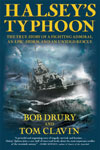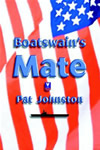I was rummaging in some emails and came across this one that was forward by John White.
Dear Dr. White,
Not sure why, but I got all nostalgic today and was doing some Google searching about my time in the Gulf of Tonkin. The site you put up on the Reeves got all the memory banks going.
I was the medical officer assigned to ComDesRon Seven out of San Diego. We deployed to WESTPAC in Nov. '72. As soon as we pulled into Subic Bay the XO came up to me on the signal bridge and waved a green piece of paper at me. He said, "Hey, Doc, I have a message here with your name on it." It was a movement order for me to take the "first available air transportation to FASU Da Nang for further transportation to USS Reeves for duty as North SAR medical officer." I read it and asked how soon did he think the "first available air transportation" would be. He pointed over to Cubi Point at a Lear jet that was on the end of the runway. "See that? They are waiting on you." Two hours later I was standing outside of the Transportation Center at Da Nang. It was late in the day so no more flights were going out to the GOT. I checked in to the barracks and bunked with some EA-6B pilots. They were just back from flying up over NVN trying to get the NVA to turn on fire control missle radars at them so they could collect ELINT. I offered to give all of them a medical discharge based on insanity.
We all spent the evening at the Red Dog Saloon. Mixed drinks were 25 cents and beer was 10 cents. You can guess the rest. The NVA decided that night they could use some target practice with their rockets. I had been in Da Nang (and thus the war zone) about eight hours and had a pretty fair blood level of San Miguel. Big mistake on my part.
The next day I went to the Transportation Center and checked in with SN Cannizzaro, the guy who ran the place. I showed him my message telling me that I was a VIP transfer to the Reeves. Cannizzaro looked at it and told me that he thought the Reeves was in Pearl Harbor. Although I had only been in the Navy for six months I suspected that CTF-75 (who had sent the message orders) knew more about ship locations than SN Cannizzaro did. I decided to go to the Post Office and ask if they were handling any mail for the Reeves. They were! It was going via the Ranger. I had no desire to continue my stay in senic Da Nang, feeling that perhaps the NVA rocket crews might feel they needed more practice and they might be getting better equipment than they were using the previous night. Our barracks had taken a direct hit, one deck under my bunk, with a dud the previous night. My solution to my transportation problem was to go over to the flight line and sit on my suitcase until a plane or a helo landed that said "USS Ranger" on the side. This worked out fine. In about two hours a SH-3 landed right in front of me. I asked if he was going back to the Ranger and he said he was going there as soon as he got the mail. I threw my suitcase in and strapped myself in. No one ever asked who I was or what I was doing. I guess they did not expect much of medical officers.
Off we went to the Ranger. When we got there the CO of the Ranger came over and greeted me. He also wanted to know what I was doing there. I guess the pilot had radioed that he had a passenger on an unknown mission. I showed him my message about the Reeves and he told me to get back in the SH-3 I had just come in on. A few minutes later they threw one of the mail sacks back in and off we went. I did not know if I was the important passenger or it was the mail. Probably the mail.
When we got to the Reeves I got to meet Capt. Lee Baggett, Jr, and HMC Corriveau. Capt. Baggett looked like he was the ideal Navy cruiser CO. Chief C looked like he had never missed a meal in his entire Navy career. We all hit it off just great. Capt. Baggett was a Mississippian just like me. We talked a lot of the Ole Miss and Miss. State football games in the past, Mississippi politics, and fishing places we had been in our state. Chief C turned out to be just the right guy for me. He did all the work and I just saw a few patients, drank a lot of coffee, and waited for any SAR mission to come up. Capt. Baggett had told me that CTF-75 op orders required a medical officer aboard for SAR and I was it.
While I was there it was time for his annual complete physical required of all officers O-6 and above. "Complete" meant that the exam included a sigmoidoscopy. At that time the sigmoidoscope was a stainless steel tube about 18 inches long. Chief C. got all the stuff in order, including putting the sigmoidoscopy instruments out on the table, and Capt. Baggett walked in at the appointed hour. He gave me and Chief C an icy stare and said, "Doctor, I was told I had to have a physical examination. No one mentioned being raped by a silver stallion." He was not a happy man. We got it all over with as quickly as we could, told him he was in great shape, and got him out of sick bay.
A couple of weeks after I had been aboard we got sent to Subic for something or other. I had a little accident and ended up as a patient in the hospital there. It ended up with me missing one toe. I had to have some surgery to put everything right so I was there in the hospital with my foot wrapped up, elevated by a rope, and hurting like Hell. Two days after I had the surgery two guys with an ambulance stretcher came up to my bed and asked if I was Lt. Bondurant. I put down my magazine and said I was. They told me to "Climb Aboard." I asked where we were going. One of them looked at his clipboard and said, "USS Reeves." We rode down to the pier, they handed me a pair of crutches, waved bye-bye, and left me there looking up at the OOD. I hobbled back aboard, saluted, and learned to how to navigate around on a cruiser while on crutches. Capt. Baggett later told me that he had called the hospital CO and asked how long I was going to be in the hospital. The hospital CO said that for what I had had done they usually kept someone there for about two weeks, assuming things went well. Capt. Baggett then informed him that he was underway that day for North SAR and he was reaquired to have a medical officer on board. Since I would not be available he needed somebody to replace me. Furthermore, he had authority from CincPac to have the hospital furnish one of their officers TAD to replace me until I could get there. Amazingly, my recovery shortened from two weeks to about two hours.
I was in my bunk on the Reeves the day we got the message that the war was over. I remember it like it was yesterday. It was 0700 on a Sunday morning. Capt. Baggett came over the 1-MC and announced that all hostilities would cease as of that minute. I had forgotten the photo flyover until I read Lt. Arnold's history. Soon after this the Reeves got orders to go home. I got orders to transfer to the USS Fox and got to stay in the GOT. But I have never forgotten my time on the Reeves. I can see all those spaces right now. Sick bay, the wardroom, CIC where I would watch the radar screens when we ran B-52 missions, all of it. How sad to know that it is all at the bottom of the Pacific now. I too had thought that someday I would find the Reeves as a museum or in the mothball fleet or something. But it will never be.
Your site has brought back a flood of memories. I have not told these stories in many years and I really do not know why I burdened you with reading them. When I read the history written by Jim Arnold it just all came flooding back and I could not stop myself. I also had a copy of that message Arnold mentioned that we got on the day the war ended. I knew it was an historic document. Unfortunately, my wife did not think it was very historic and tossed it out in one of her cleaning binges. I sure would like to get another copy. If you have one I would sure like to get a copy. Well, thanks for listening.
Sid Bondurant, MD
© 2008 USS Reeves Association. All rights reserved. Last update: 9/20/2008





